2024 Triumph Daytona 660 Review
Test by Kris Hodgson, Images by Dean Walters Photography
When Triumph announced the Daytona 660, there was quite a bit of teeth-gnashing over the move from a supersport-style machine to a regular ole sport model. But for anyone paying attention, this was hardly surprising. The supersport market is barely a blip on the motorcycling radar these days, while the 650 class of sports bikes continues to grow, heavily bolstered by beginner and upgrading-from-beginner motorcyclists.
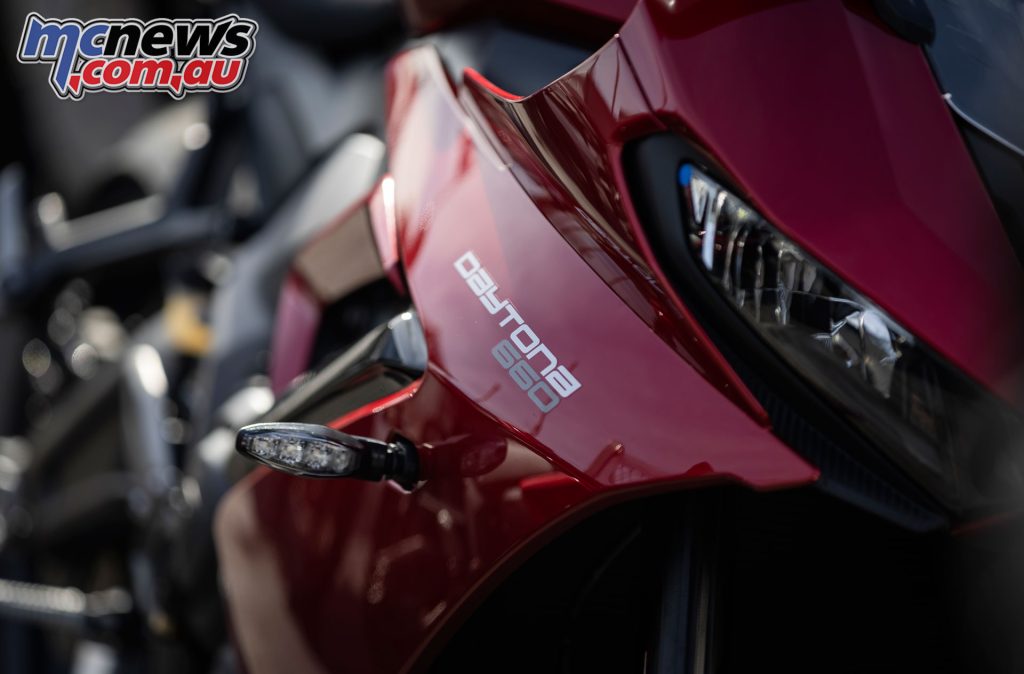
It’s no wonder given the ever-decreasing speed limits and heavier policing of the roads. I loved my Daytona 675R 10 years ago, but I wouldn’t buy another one today. Did I grow up, or just get soft and unfit? Probably a bit of both.
The Trident saw Triumph extend its presence in that 650 class a few years ago, eventually expanding to the Tiger Sport 660 and now the Daytona, which adds a faired option back into the mix.
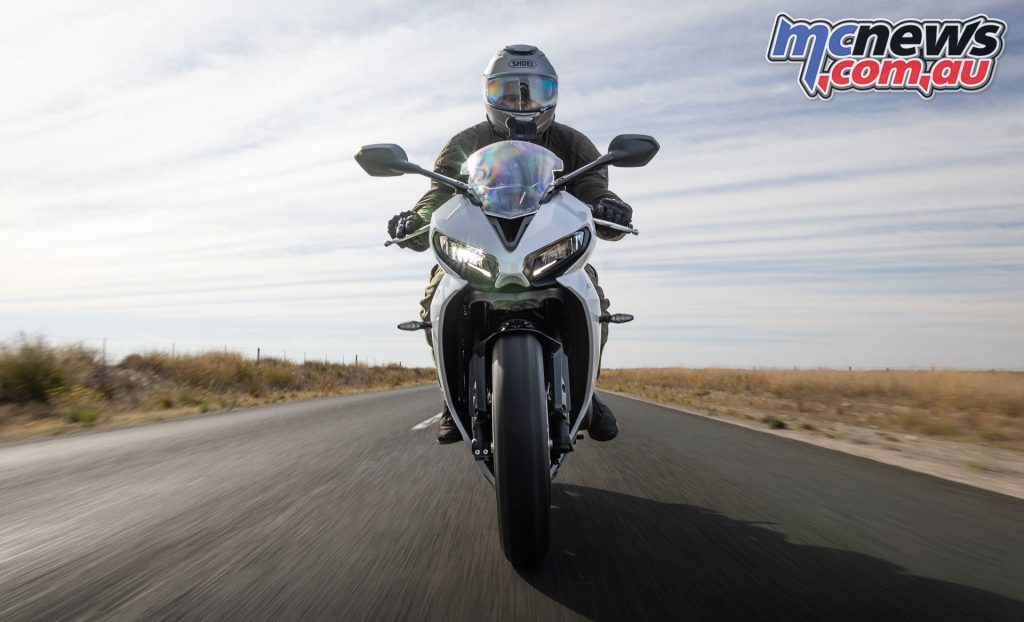
The new Daytona 660 is unabashedly based on the Trident and, in some ways, reminds me of the Street Triple 675 back around 2010 or so. It was a more basic offering than today’s 765s, which now come with all the high-end fruit. But it was still quite a sought-after option for its class. The value was there, and that seems to be what Triumph is recapturing here.
Does the Daytona 660 look like it’s been chubbed up a bit compared to the old 675? Undeniably, but the bike does look better in the flesh. That’s mirrored in the weight figure, which when fully fuelled, tips just over 200kg (201 to be exact – although that’s not really felt onboard.
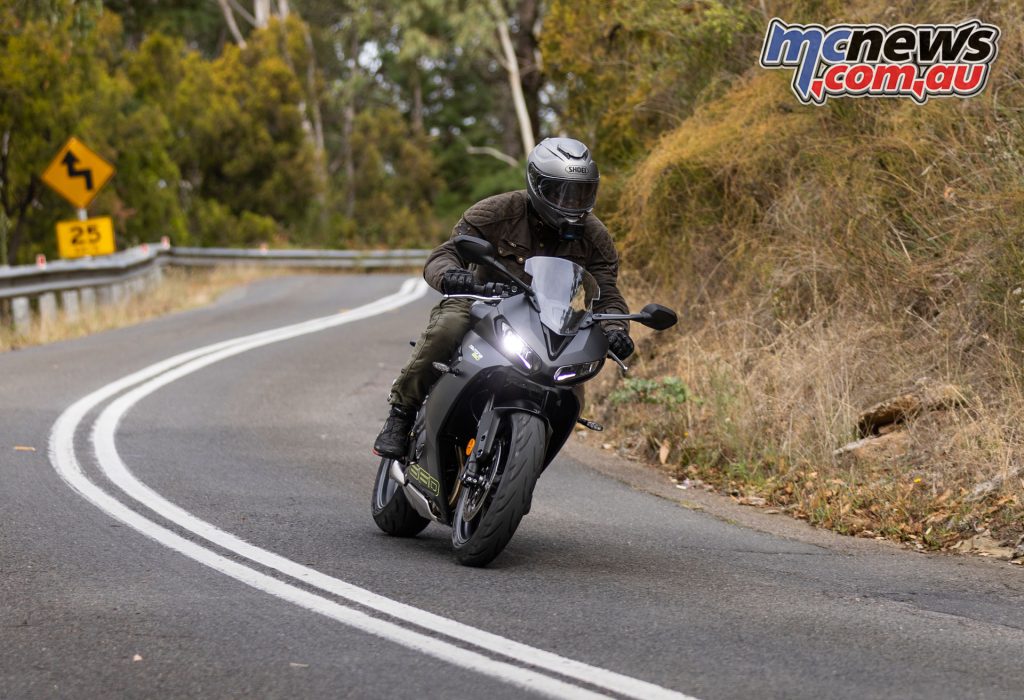
The 660 won’t be for everyone, but I reckon it’ll appeal to many, many more riders than a relaunched full supersport Daytona would, and we’ve only got ourselves to blame for that. We just aren’t buying those bikes anymore.
The Daytona 660 retails for $14,790 ride-away here in Australia and, excitingly, will be available in both a LAMS version and a full-power version. Triumph actually explained that with the previous 660s, it just wasn’t given an option to bring in the full-power versions, keeping in mind the bikes we get are specific to Australia and New Zealand. No other market matches our ADRs, with our government bureaucracy striking again. Could that change? Something to keep an eye out for, apparently. Not the bureaucracy, though. That’s not going anywhere.

For the Aussie Daytona 660 launch we did an extended return-trip from The Bend Motorsport Park to Adelaide. Taking in some open roads, as well as some better twisties for variety, before finally making our way through the suburbs of Adelaide.
I nabbed a LAMS Daytona 660 before lunch and spent the first half of the day on the ‘beginner’ option.
Triumph have maxed out that power-to-weight ratio and the only time I really felt the bike fell into this restricted category is when I saw 175 km/h on the dash and the bike seemed to hit a limiter. Some of the other riders reckoned they hit 182 before experiencing the same.
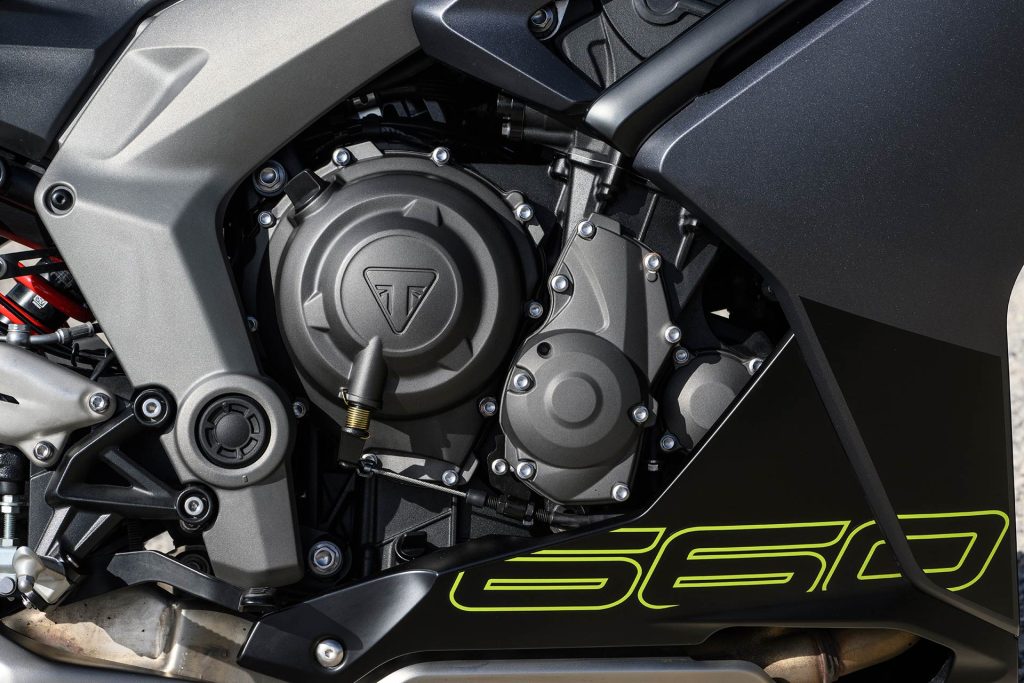
The Aussie LAMS version is actually quite a bit more powerful than the A2 variant in the EU, performance peaks just shy of 42kW (A2 – 35kW), while torque reaches 62Nm at 6250 rpm, seven down on the full power version, but arriving 2000rpm earlier. The full power model peaks at 70 kW in comparison, and it’s not twice as fast. In fact, the LAMS model might take the cake there until you hit the restriction, ironically enough.
What does all this mean in real-world terms? The 660 LAMS pulls hard, with an impressively flat torque curve from down low and through most of the rev range. I would never have jumped on this bike and come to the conclusion it was for beginners.
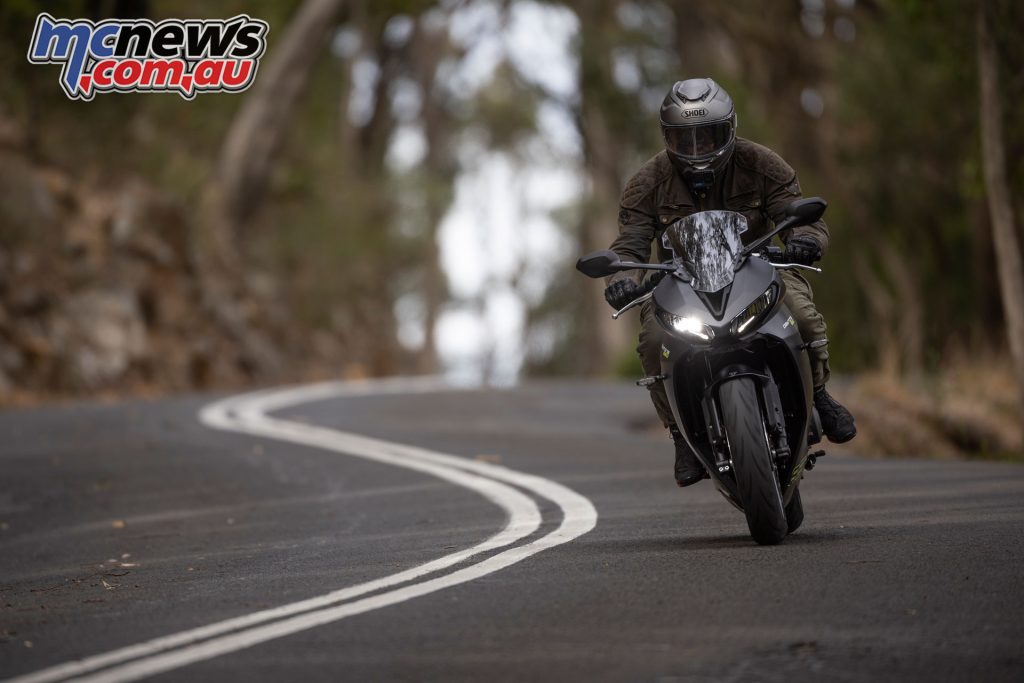
Of course, that’s the real trick to this class of bike, but Triumph has done particularly well here. Not that I was generally holding those gears to redline. I was making use of the mid-range instead. You don’t need to hit the red-line to get the most out of the bike. Just ride that beautiful wave of triple-cylinder torque.
Fuelling off a closed throttle is super-smooth, and pickup is great. First gear is quite tall, so you don’t need to instantly shift up like you do on smaller bikes, and you can even trundle around in first quite happily. Second also pulls well from down low, making the Daytona 660 a very forgiving machine at low speeds, for around-town riding. An accidental full-throttle opening will still get you in trouble, but for a new rider, this should be a manageable machine, and if you’re not an absolute rev head, it would still cover the bases for many on a full licence.
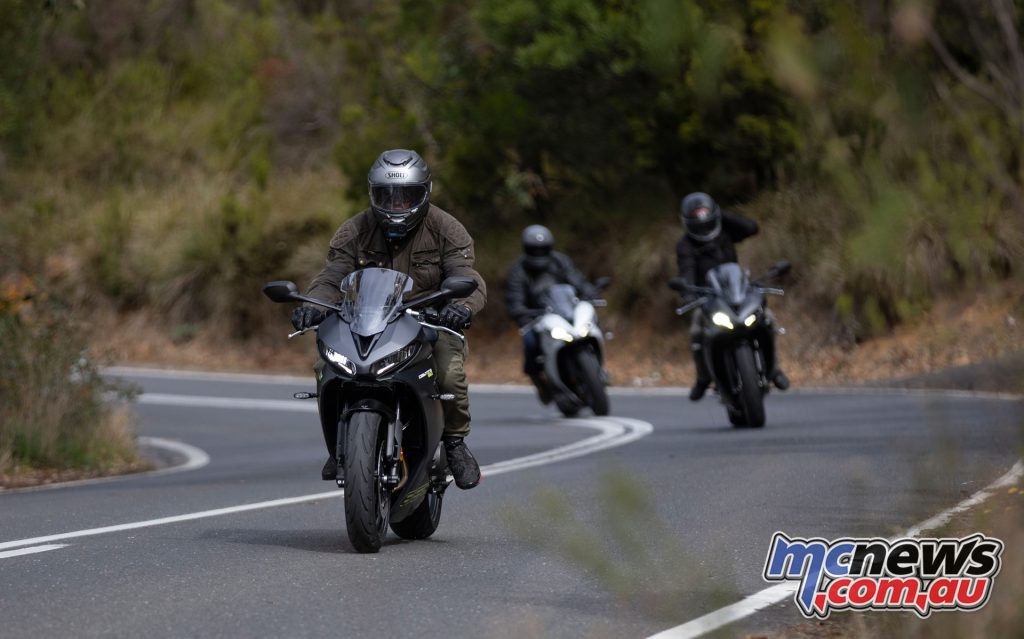
That low-down torque carries through the majority of the rev range, too, with great punch and a taut and responsive power delivery that drops onto smooth and predictable engine braking into the corners when you roll off the throttle.
I did struggle to get the bike back into gear from neutral every now and then, but on the move, shifts were light and easy, with solid engagement. Once moving with a bit more alacrity, I could effortlessly upshift without the clutch. I actually had to check if there was a quick-shifter (up only, of course), but alas, no. That’s an accessory.
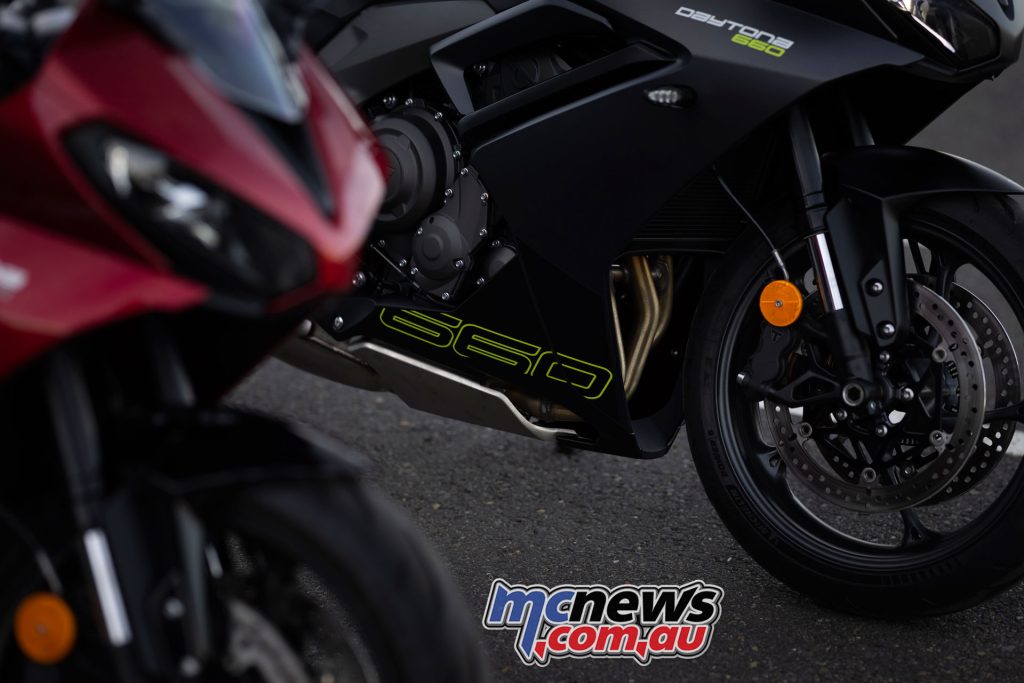
It’s important to note the only difference between the LAMS and full-power bikes, is that engine tune. There’s no ‘L’ or ‘LAMS’ written on the bike. It’s just a VIN range, according to Triumph Australia, with red stickers on the fork tops of our bikes so we (and Triumph) could tell the two apart. Everything else is exactly the same.
I owned a Daytona 675R for a good number of years, and I’ll admit to noticing some subtle differences between the two bikes regarding the character of the engine.
The full-power version wasn’t quite as torquey down low and felt the more free-flowing and revvy of the two bikes, while engine-braking seemed a little less pronounced, giving the bike a slightly sportier feel. That made the bike a little more rewarding to rev harder, which will no doubt appeal to those really set on getting the full power version.
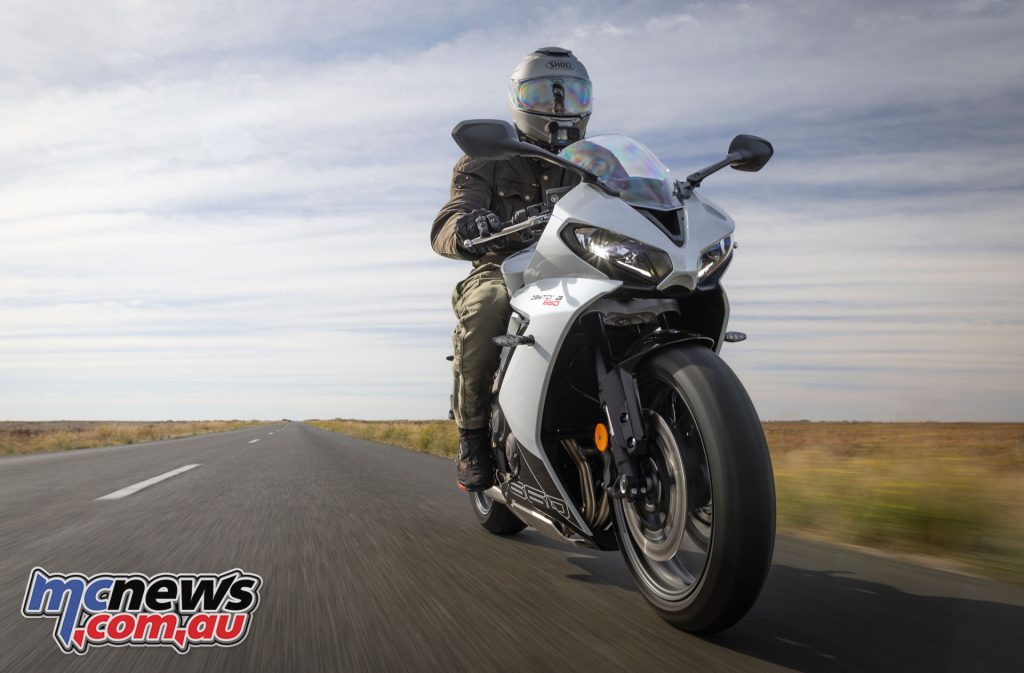
The gearbox was still super-slick, but if I really wanted to nitpick. I felt like the fuelling wasn’t quite as smooth. The LAMS version would more happily tractor around at very low rpm, whereas I found myself feathering the clutch at times on the full-power bike in towns and in traffic, where a lower gear was probably advisable.
Both bikes share the same electronics package. Ride modes encompass ABS and traction control, with differing throttle responses in those modes. That covers all the bases for this class of bike, alongside a TFT/LCD dash. Mobile phone connectivity is a separate accessory, which I found to be a strange concept, even as someone who doesn’t use that connectivity on a bike. This being a more value-orientated bike, I’d let it slide, unlike on more premium machines, where it should be standard.
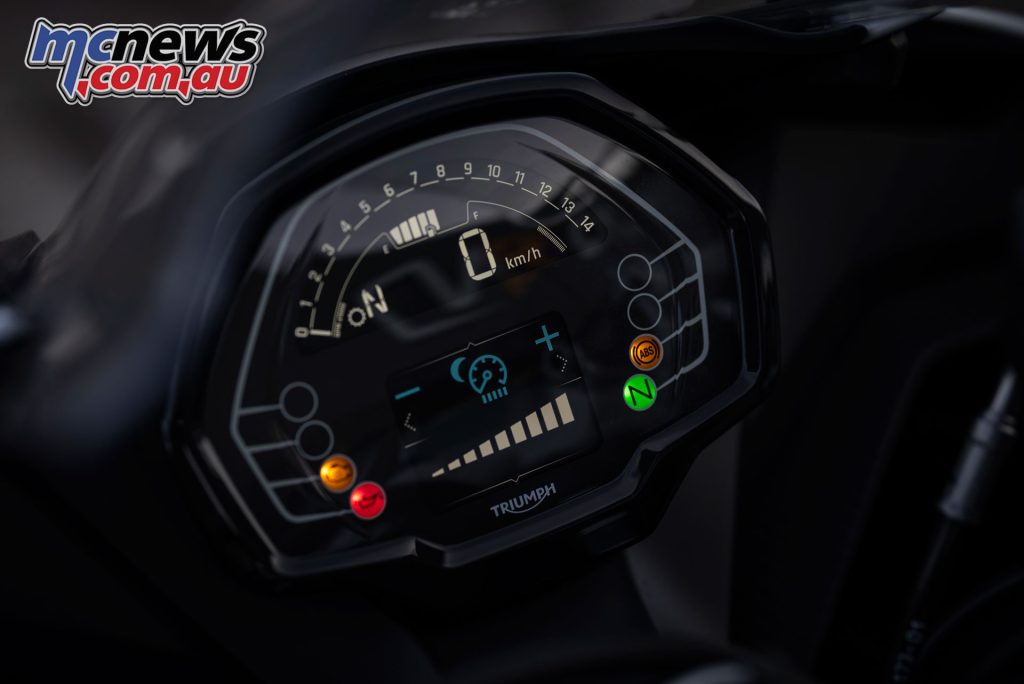
Switches include a mode button, too, and there’s no cruise control, but I’m not sure I’d really call these sports-tourers, strictly speaking. Just a ‘sport’ if you ask me. 60-90 minutes in the saddle should be easily do-able.
The big appeal of either variant is they’re not a parallel-twin in this day and age of beige. That unique Triumph triple whistle-and-purr is very obvious, and something I do really like, alongside that lovely mix of the best aspects of twin and four-cylinders. It’s a huge point of difference in the class, backed by a good suspension set-up and very nice overall build quality.
But a unique engine offering for the class isn’t enough these days, as this truly is a very competitive area of the motorcycling market.
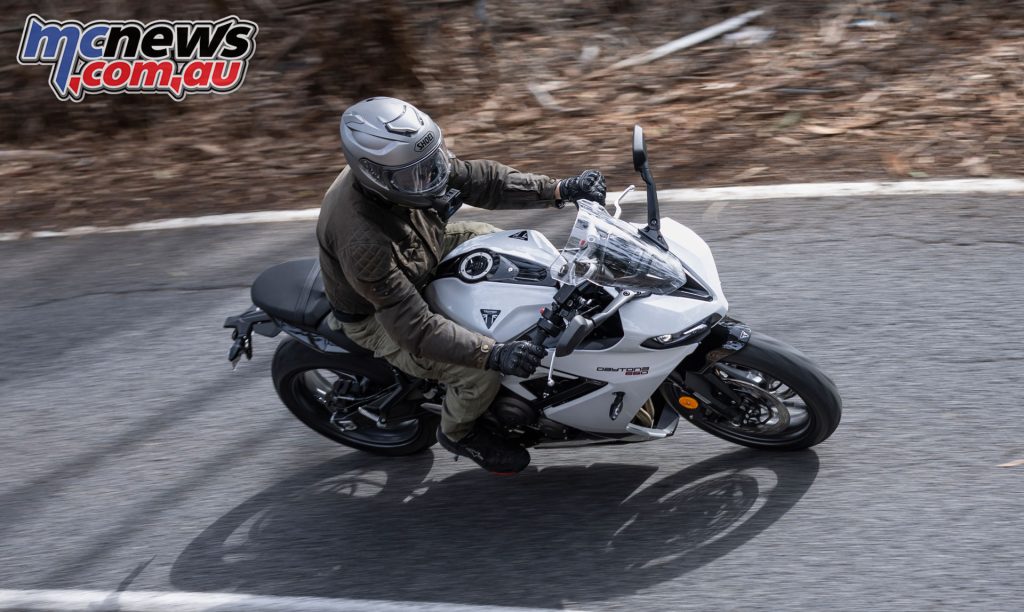
Luckily, Triumph has delivered and the Daytona 660 very much reminds me of the older 675 Street Triples, ie. great handlers, comfortable, and a little more aggressive than the old Streets due to the ‘bar placement. They’re an ideal mid-point between a naked and supersports, putting little weight on your wrists, or not too much stress on your back. Certainly a sportier proposition than the Trident, for those who didn’t want a nakedbike but still like the package.
Feet-to-peg ratio is definitely sport, but that 810mm seat height was very inviting for me at 180cm or so, and the bike felt nice and narrow between the legs. It was a little too narrow, perhaps between the knees at the tank, where I found I wasn’t the perfect fit, unlike on my old 675. That’s a small complaint, and for sporty riding, some tank grips would be welcome. You can even drop that seat-height down to 785mm with the low seat, although comfort did seem good on the standard saddle.
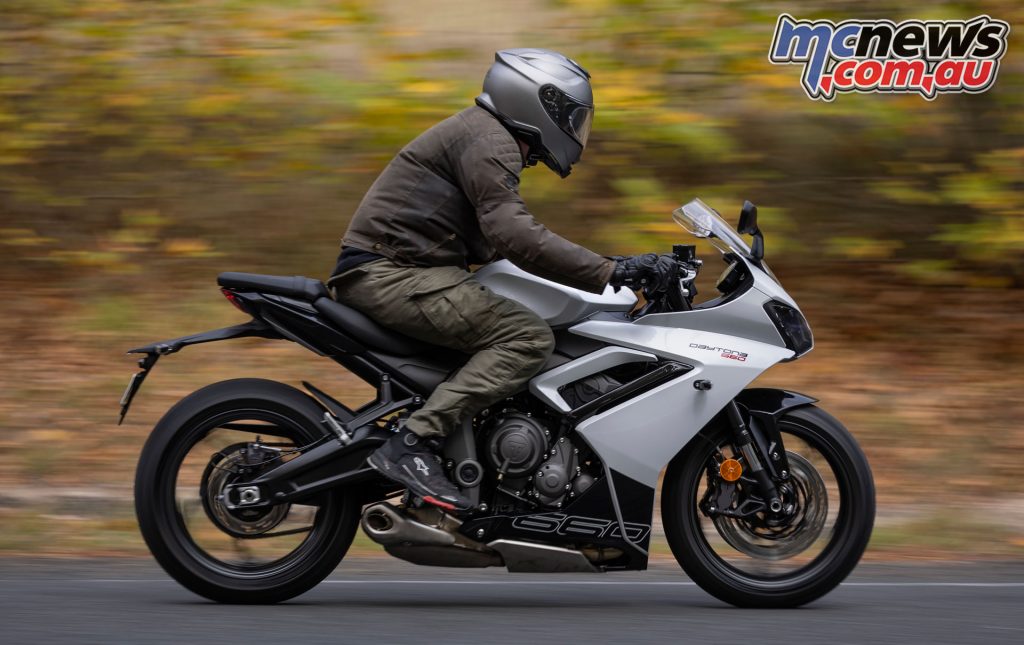
Showa provide the suspension on the Daytona with SFF-BPF forks, and a pre-load adjustable shock, which is fairly basic as far as adjustment is concerned, but well set-up for me at 75kg, so I’m not complaining.
On occasion, the rear struggled to cope with some harsher bumps, and front-end feel wasn’t as amazing as a modern Street Triple, but this is a more basic class of bike.
Handling was still a standout, with that typical Triumph confidence-inspiring and neutral feel really coming to the fore, a certain plus in the 650 class.
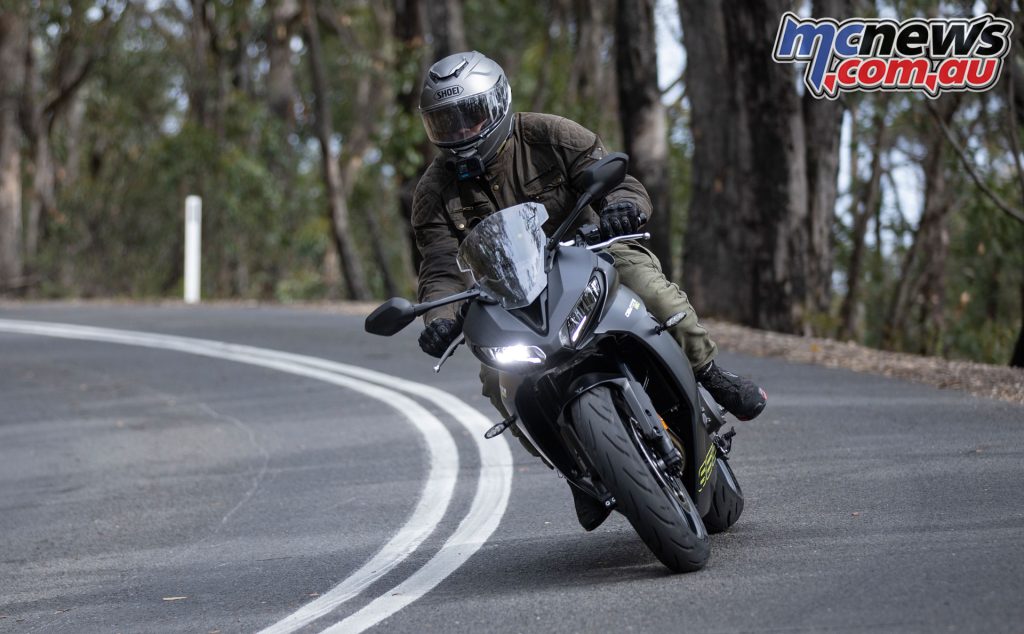
I reckon you’d be pretty happy riding one of these bikes on the daily commute and having some fun in the twisties on weekends. While it’s no Ohlins setup like my 675R or a highly-adjustable system like the modern Street Triple R/RS, I’d be very pleased with this package, especially for the price.
Brakes are Triumph-branded, with four-piston calipers on the front offering plenty of stopping power and feel. It’s no Brembo set-up, and a bit softer on the bite as a result, but this a more relaxed machine, and the brakes were more than up to the task. In fact, braking hard before corners there were a few times I was really wishing for the tank grips, rather than transferring that weight onto the ‘bars.
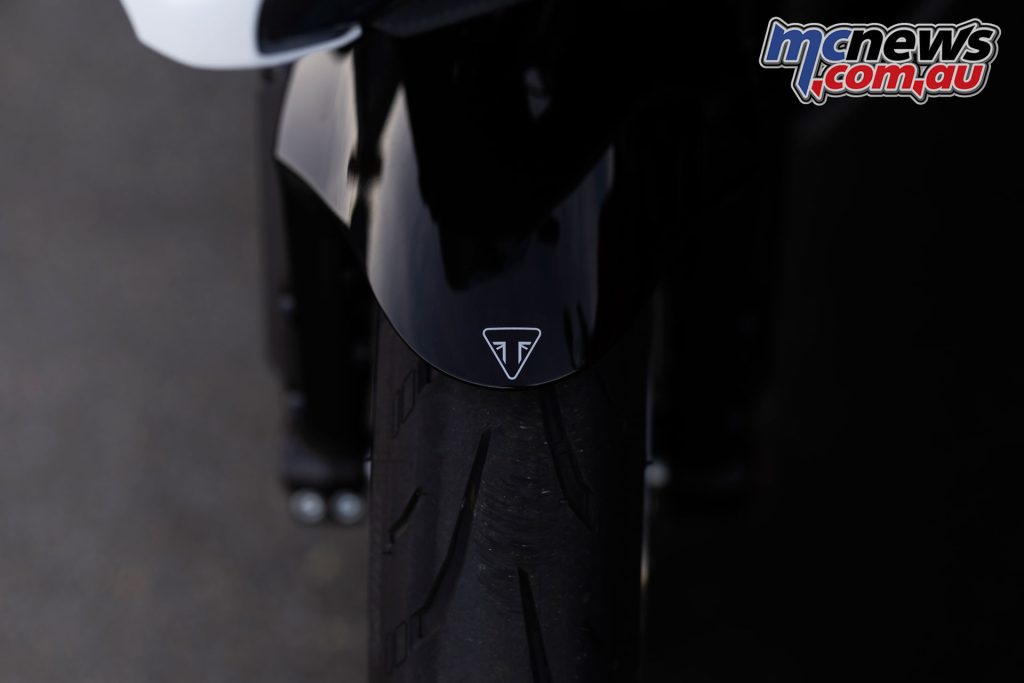
Premium Michelin Power 6 tyres are standard, and well-suited to varied usage, and were ideal for our test. No complaints there, but we had pretty much ideal riding conditions – it was sunny, with a decent breeze keeping things comfortable.
I came away impressed with the Triumph Daytona 660. The modern Triumph heritage is very strong with this bike, and the triple is something special in the class.
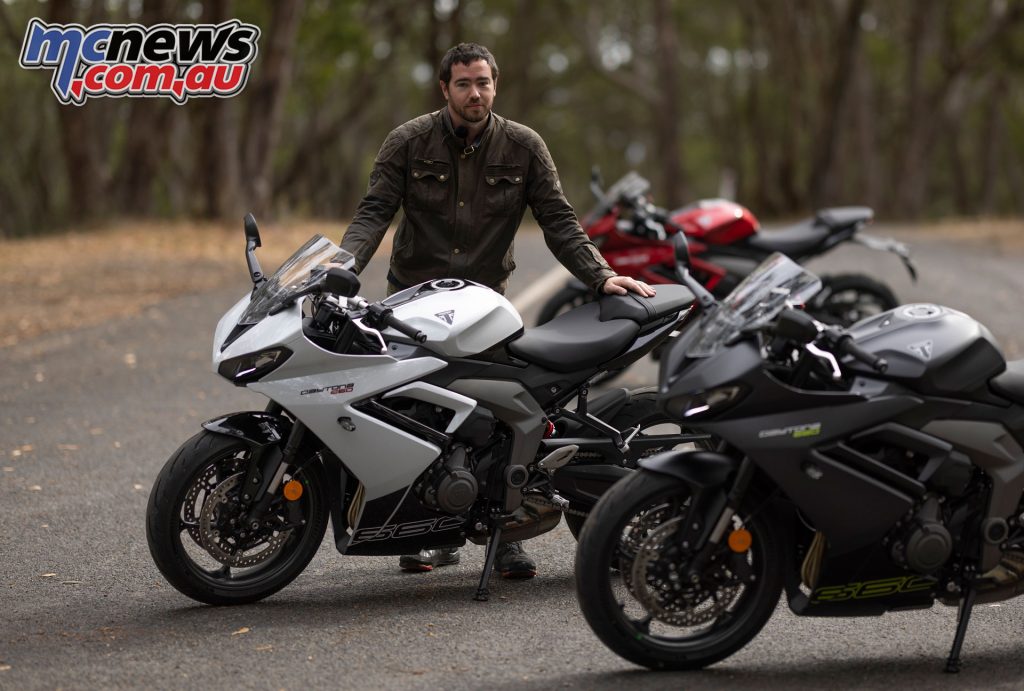
For the buy-in, you’re getting a great machine, although if you’re a really demanding rider, there’s no doubt the Street Triple R or RS will probably remain a better choice.
For this 650-class segment, Triumph is bang-on the money. Starting on a Daytona 660 would set the bar very high indeed, while the full-power version is well spec’d to impress at under $15K ride-away here in Australia. That is a pretty decent chunk of change for a first motorcycle, but if that’s not your thing, the new Speed 400 and Scrambler 400 X are also worth considering.
The 660 also looks the business, with typically high Triumph build-quality, deep paint on the white and red options, plus quite a premium overall feel.
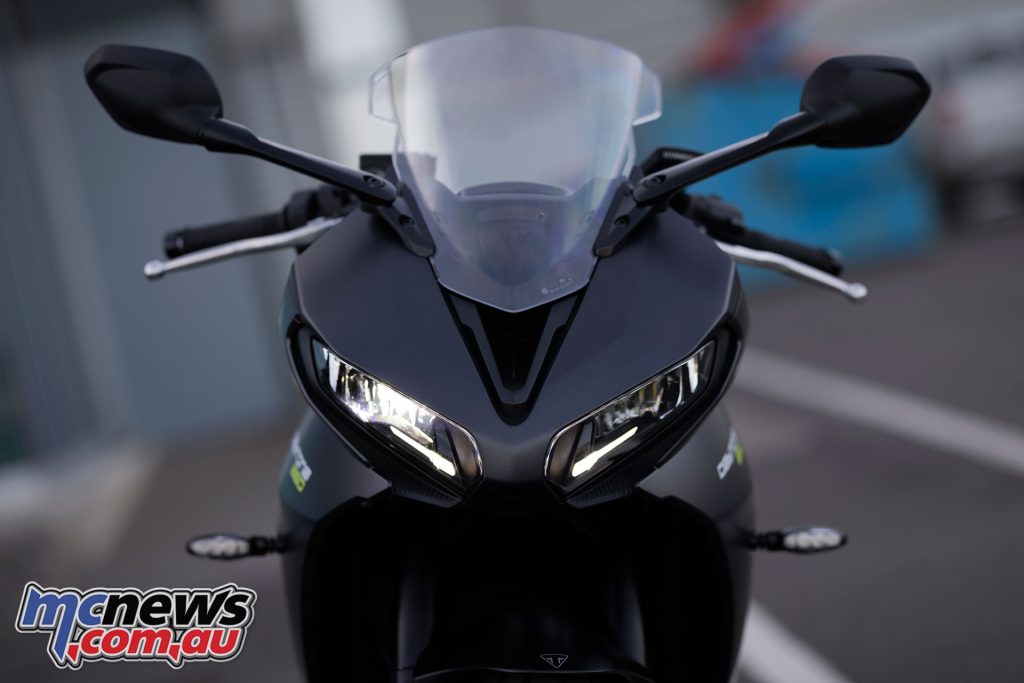
For more information head to the Triumph Motorcycles Australia website (link).
What I like about the Daytona 660:
- Great triple-cylinder and fuelling
- Good Showa suspension for me at 75 kg
- Intuitive electronics, covering the expectations
I’d like the Daytona 660 better if…
- A standard quick-shifter for the price would be nice
- A 660R with adjustable suspension… maybe…
2024 Triumph Daytona 660 Specifications
| 2024 Triumph Daytona 660 Specifications | |
| Engine | Liquid-cooled, inline 3-cylinder,12 valve, DOHC, 240° Firing order, 660cc |
| Bore x Stroke | 74.04 x 51.1 mm |
| Compression | 12.05:1 |
| Maximum Power | 70 kW (95 PS) at 11,250 rpm / LAMS: 41.9 kW (57 hp) at 6750 rpm |
| Maximum Torque | 69 Nm at 8250 rpm / LAMS: 62 Nm at 6250 rpm |
| Fuel System | Multipoint sequential electronic fuel injection with electronic throttle control |
| Exhaust | Stainless steel 3-into-1 header system with low single sided stainless steel silencer |
| Final Drive | X-ring chain |
| Clutch | Wet, multi-plate, slip & assist |
| Gearbox | Six-speed |
| Frame | Tubular steel perimeter frame |
| Swingarm | Twin-sided, fabricated steel |
| Wheels | Cast aluminium alloy five-spoke, 17 x 3.5 in, 17 x 5.5 in (F/R) |
| Tyres | 120/70 ZR 17, 180/55 ZR 17 (F/R) |
| Front Suspension | Showa 41 mm upside down separate function big piston (SFF-BP) forks, 110mm wheel travel |
| Rear Suspension | Showa monoshock RSU, with preload adjustment, 130mm wheel travel |
| Front Brakes | Twin 310 mm floating discs, four-piston radial callipers, ABS |
| Rear Brakes | Single 220 mm fixed disc, single piston sliding calliper, ABS |
| Instruments | Multi-function instruments with colour TFT screen |
| Length | 2083.8 mm |
| Width (Handlebars) | 736 mm |
| Height Without Mirrors | 1145.2 mm |
| Seat Height | 810 mm |
| Wheelbase | 1425.6 mm |
| Rake | 23.8° |
| Trail | 82.3 mm |
| Wet weight | 201 kg (90% fuel volume) |
| Fuel Tank | 14 litres |
| Fuel Consumption | 4.9 L / 100 km |
| Emissions Standard | EURO 5+ |
| Service interval | 16,000 km /12 months service interval, whichever comes first |



































